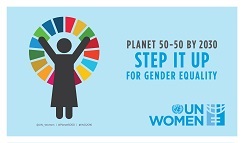The 2030 Agenda for Sustainable Development

In 2015, countries agreed on the need for comprehensive financing for development; adopted a new sustainable development agenda; and charted a universal and legally binding global agreement on climate change.
Concluding a negotiating process that has spanned more than two years and featured the unprecedented participation of civil society, on 2 August 2015, governments united behind an ambitious agenda that features 17 new Sustainable Development Goals (SDGs) and 169 targets that aim to end poverty, combat inequalities and promote prosperity while protecting the environment by 2030.
Agreed by consensus, the draft outcome document “Transforming Our World: the 2030 Agenda for Sustainable Development”, was formally adopted by world leaders at the United Nations Summit for the post-2015 development agenda, held in New York from 25-27 September 2015.
To spur concrete commitments and position gender equality, women’s rights and women’s empowerment at the centre of the global agenda, UN Women and the People’s Republic of China co-hosted and co-organized a “Global Leaders’ Meeting on Gender Equality and Women’s Empowerment: A Commitment to Action” on 27 September 2015, at UN Headquarters in New York.
The new sustainable development agenda builds on the Millennium Development Goals (MDGs), drafted in 2000, which focused on reducing poverty, hunger, disease, gender inequality, and ensuring access to water and sanitation by 2015. The new sustainable development goals, and broader sustainability agenda, aim to complete what the MDGS did not achieve, and go much further, addressing the root causes of poverty and inequality and the universal need for development that works for all people.
The new agenda is an action plan for people, planet, prosperity, peace and partnership. It will foster peaceful, just and inclusive societies and require the participation of all countries, stakeholders and people. The ambitious agenda seeks to end poverty by 2030 and promote shared economic prosperity, social development and environmental protection for all countries. The new agenda is based on 17 goals, including a stand-alone goal on gender equality and the empowerment of women and girls (SDG 5) as well as gender-sensitive targets in other goals.
This is the first development agenda that has been negotiated by all Member States and that is applicable to all for the next 15 years. The outcome reiterates national ownership and leadership in the implementation of the agenda.
What’s next?
Tasked with developing indicators to monitor global progress on these new goals, an Inter-agency and Expert Group on SDG Indicators was established and UN Women contributes as an observer. The Group’s proposal will be presented for approval to the Statistical Commission at its forty-seventh session in March 2016.



